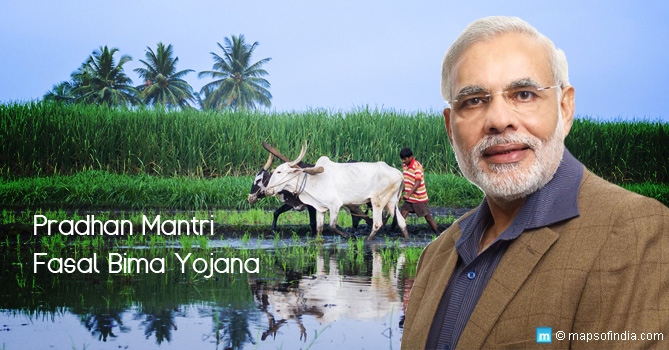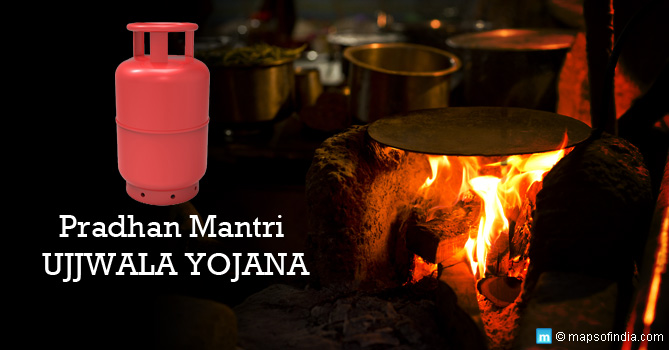Background
The one agenda that formed the highlight of BJP’s election manifesto prior to its ascent to power in the Lok Sabha elections (2014) was social security. Ever since the NDA formed the government at the Centre, it has launched a number of welfare schemes that promise banking, pension, employment, and insurance to the poor people of the country. The government during the launch of the Pradhan Mantri Krishi Sinchai Yojana (a scheme meant to improve irrigation and water conservation in the country’s rural regions and farms) had noted that working towards the improvement of the agricultural sector was of prime importance. Agriculture employs nearly half of the employed people in the country. The security and well being of farmers is thus of prime importance to the progress of the country. It is with this in mind that the Pradhan Mantri Fasal Bima Yojana was launched on 13 January 2016. The timing of the launch seems perfect – this new crop insurance scheme for the country’s farmers has been launched just ahead of Makar Sankranti – one of the main harvest festivals celebrated in India (also celebrated as Lohri and Pongal in some parts of the country).
The Launch of the Pradhan Mantri Fasal Bima Yojana
The launch of this one-of-a-kind crop insurance scheme was announced by the Union Home Minister, Mr. Rajnath Singh, in the presence of the Union Minister of Parliamentary Affairs, Mr. M. Venkaiah Naidu and Union Minister of Agriculture and Farmers’ Welfare, Mr. Radha Mohan Singh. “Pradhan Mantri Fasal Bima Yojana will offer more insurance with less premium, and purchasing capacity of farmers will rise,” said Mr. Singh. He assured the nation that the Union Cabinet had given this ‘historic’ scheme its approval. Top BJP leaders, including party chief Mr. Amit Shah, praised the scheme and said that it was one of the most beneficial schemes (for farmers) launched by the Indian government since Independence.
Highlights of the Scheme
- For many years now, a number of complex crop insurance schemes have existed. Farmers, however, have been unable to avail the benefits of these schemes. The Pradhan Mantri Fasal Bima Yojna has now replaced all other crop insurance schemes and integrated the benefits in one single yojana.
- This means that earlier schemes such as the National Agricultural Insurance Scheme (NAIS) and Modified National Agricultural Insurance Scheme (MNAIS) will no longer be available.
- In most of the earlier crop insurance schemes, premium rates had risen drastically in recent years. This means that the premium charged was about 25 percent of the sum assured – the rise in premium was anywhere between 22 and 57 percent. The compensation derived by farmers in the eventuality of a crop failure, was in contrast, very low.
- The Pradhan Mantri Fasal Bima Yojana is premised on a premium amount of 2 percent for Kharif crops and of 1.5 percent for Rabi crops. This covers most food crops and oil crops cultivated in India. The premium is pegged at 5 percent for commercial or horticultural crops (including cotton) for one year.
- This means that the farmers shall derive “maximum benefits by paying minimal premium”. The government has decided to get rid of the “capping” mechanism that did not allow farmers to derive legitimate benefits previously.
- This drastic reduction in crop insurance premium is likely to result in an increase of the Center’s financial load by about 500 percent. The benefits will, however, be derived by the farmers, the government said.
- Apart from relief on premium, the farmers shall derive the benefits of this scheme where assessment of crop losses shall be quick. Smart phones, remote sensing technology and even drones shall be used to estimate losses, assess compensation, and settle claims without much delay.
- The Pradhan Mantri Fasal Bima Yojana will be applicable from the forthcoming Kharif season of 2016.
PM Modi releases guidelines for PMFBY
On 18 February 2016, PM Narendra Modi unveiled the guidelines for operationalization of the Pradhan Mantri Fasal Bima Yojana (PMFBY). The guidelines were issued at a farmers’ convention that was held at Madhya Pradesh’s Sherpur village. The Yojna, which aims at boosting India’s agriculture sector, will come into force from the 2016 Kharif season.
Read More:
‘Stand up India’ Scheme by PM Modi : Highlights, Objectives, Benefits, Process
PM’s Employment Generation Programme (PMEGP) : Details, Benefits, Objective, Eligibilit
Setu Bharatam Project
Pradhan Mantri Ujjwala Yojana
Atal Pension Yojana
MUDRA Bank Yojana
Sukanya Samriddhi Account
Pradhan Mantri Jeevan Jyoti Bima Yojana (PMJJBY)
Pradhan Mantri Suraksha Bima Yojana (PMSBY)
Pradhan Mantri Kaushal Vikas Yojana
Pradhan Mantri Krishi Sinchai Yojana
Pradhan Mantri Awas Yojana (PMAY)
One Rank One Pension Scheme
Seventh Pay Commission
Garib Kalyan Yojana
All Information about Digital India Programme
DigiLocker
eBasta – Features and Benefit for students
Atal Mission for Rejuvenation and Urban Transformation
Mahatma Gandhi National Rural Employment Guarantee Act (MGNREGA)
Beti Bachao Beti Padhao Scheme
Deen Dayal Antyodaya Yojana (DAY)
Pahal Scheme
Jan Dhan Yojana
Skill India Programme
Swachh Bharat Abhiyan: Making India Clean & More





